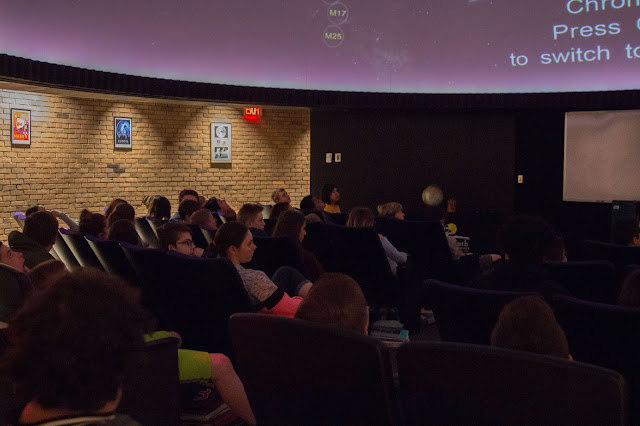At the end of April 2018 found my wife and myself in the Norwegian town of Tromsø, situated at the northern end of Norway, above the Arctic Circle at 69 degrees latitude. It was a spur-of-the-moment decision to visit here, motivated by a desire to travel somewhere new during some holiday time away from work. A fine trip it was too: beautiful scenery, friendly people, a bit of adventure (dogsledding!), and downtime from the daily work grind.
Of course, I wouldn't be writing this blog post unless there was some sort of angle into the world of astronomy that I could discuss, no matter how tangential. What would that be? The location of Tromsø should give it away: Auroras! Unfortunately, we were here past the prime aurora-watching season, but from what we saw in town, there are a plethora of ways to watch the auroras when the time is ripe (between mid-November and mid-January is best since during this time the sun never rises above the horizon).
There are guided bus or auto tours, sea cruises, night flights from the local airport (in case the clouds have you socked in), sled dog (or reindeer!) trips into the wilderness where you can camp under the stars, etc, etc.
And if all else fails, you can visit the local planetarium at the science museum (https://nordnorsk.vitensenter.no/en/planetarium?language=en), which is exactly what we did, viewing the show "Extreme Auroras". Not quite as good as seeing it firsthand (but it an excellent show nonetheless), but it'll have to do until next time when we come back in winter!
Read More
 |
| Aerial view of the Norwegian town of Tromsø - Photo by Muir Evenden. |
Of course, I wouldn't be writing this blog post unless there was some sort of angle into the world of astronomy that I could discuss, no matter how tangential. What would that be? The location of Tromsø should give it away: Auroras! Unfortunately, we were here past the prime aurora-watching season, but from what we saw in town, there are a plethora of ways to watch the auroras when the time is ripe (between mid-November and mid-January is best since during this time the sun never rises above the horizon).
 |
| Sled dogs and sea cruises to observe the aurora borealis are just a few activities to engage in. Photos by Muir Evenden. |
There are guided bus or auto tours, sea cruises, night flights from the local airport (in case the clouds have you socked in), sled dog (or reindeer!) trips into the wilderness where you can camp under the stars, etc, etc.
 |
| Wall-sized Planisphere at The Planetarium at the Science Centre of Northern Norway currently showing "Extreme Auroras". Photo by Muir Evenden. |
And if all else fails, you can visit the local planetarium at the science museum (https://nordnorsk.vitensenter.no/en/planetarium?language=en), which is exactly what we did, viewing the show "Extreme Auroras". Not quite as good as seeing it firsthand (but it an excellent show nonetheless), but it'll have to do until next time when we come back in winter!




